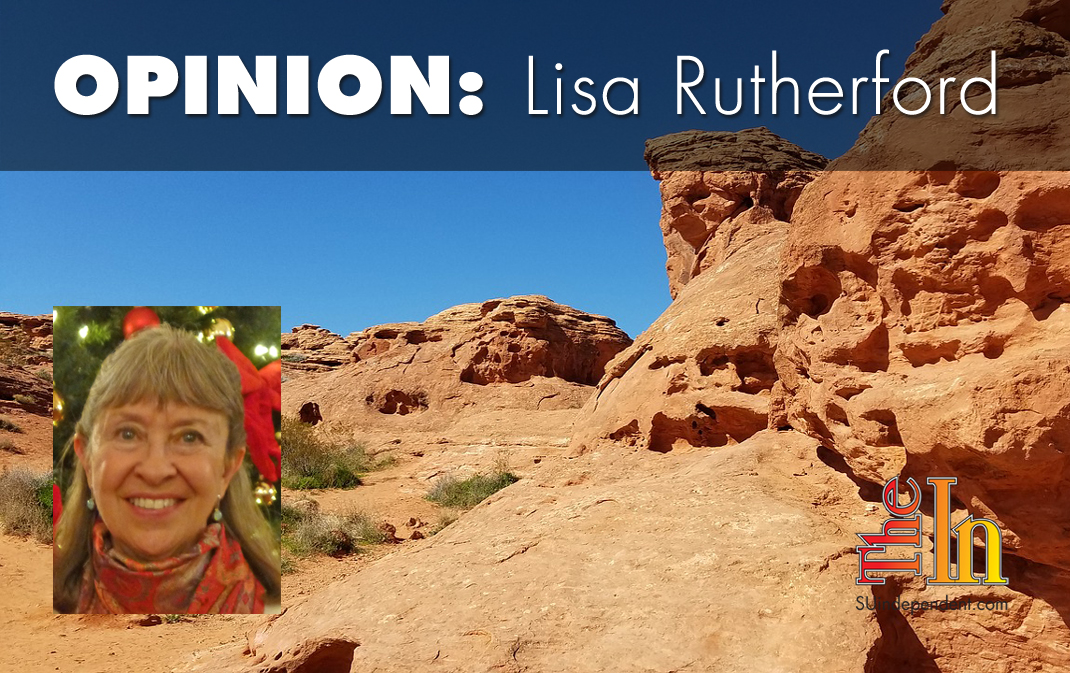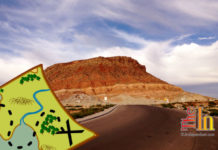
Year-end and new year thoughts about special places
The year 2019 has been a challenging one as usual when it comes to public lands, particularly in Utah and specifically in southern Utah where the long-fought battle over the Northern Corridor has been gaining steam all year and will continue into 2020.
I’ve written several articles about the current situation and about the need for public involvement at this time when comments about the highway are being accepted. Writing these articles has caused me to give much thought to what Red Cliffs Desert Reserve and Red Cliffs National Conservation Area mean to me and our county and how important it is to stop the highway.
Comparing our 61,000 acres of protected land and New York’s Central Park started to develop in my mind. Now, there are many differences between our protected land and Central Park, I’ll agree. Certainly size is one. But some of the reasons for the development of Central Park and the value it holds, not just economic, apply to protection of our lands. Both provide a place where people can get away from the hectic activities of a bustling city.
The economic value of these two open areas is indisputable. I don’t know exactly what the dollar value of Central Park is, but the 843-acre land is put at $39 trillion by some. Our Red Cliffs Desert Reserve and Red Cliffs National Conservation Area are not that valuable. However, land prices continue to escalate in our county, and remaining private land owners in the reserve face challenges trying to have their property purchased or exchanged out as is required.
In the 1800s, many “socially conscious reformers” in New York saw the value of creating a great public park that would “improve public health and contribute greatly to the formation of a civil society.” In fact, it was primarily wealthy landowners and merchants who saw the value in creating such a park. One goal for its creation was to refute the “European view that Americans lacked a sense of civic duty and appreciation for cultural refinement and instead possessed an unhealthy and individualistic materialism that precluded interest in the common good.”
Perhaps we do not have the ability to “create” a park to suit our needs exactly as they did, but we do have an area created by nature that draws people from across the nation and world and provides all citizens with the opportunity to enjoy what nature has created. It’s something worth protecting. And it’s certainly worth honoring those whose vision in the 1990s established the Red Cliffs Desert Reserve, now mostly the Red Cliffs National Conservation Area.
Manhattan, where Central Park is located, has 21,613 acres. The 843-acre park comprises about 4 percent of that area. If an area as densely populated and as economically rich as Manhattan Island can devote such an area as this for the benefit of its citizens and visitors, can’t we?
Washington County has 1,552,640 acres, and 61,000 acres is 4 percent of that. Can’t we devote this much to allow the threatened and endangered species there to reside peacefully and safely while coexisting with our recreation-loving and serenity-loving citizens and visitors?
Can’t we protect the beauty of this area without marring it with a highway?
Let’s encourage leaders and planners to go back to the drawing board and come up with reasonable and effective solutions to our transportation challenges without ruining this special area. Go to conserveswu.org/scoping/ to learn how to make your comments to BLM during this open comment period before the Jan. 6 deadline. Happy New Year to all!
The viewpoints expressed above are those of the author and do not necessarily reflect those of The Independent.
How to submit an article, guest opinion piece, or letter to the editor to The Independent
Do you have something to say? Want your voice to be heard by thousands of readers? Send The Independent your letter to the editor or guest opinion piece. All submissions will be considered for publication by our editorial staff. If your letter or editorial is accepted, it will run on suindependent.com, and we’ll promote it through all of our social media channels. We may even decide to include it in our monthly print edition. Just follow our simple submission guidelines and make your voice heard:
—Submissions should be between 300 and 1,500 words.
—Submissions must be sent to editor@infowest.com as a .doc, .docx, .txt, or .rtf file.
—The subject line of the email containing your submission should read “Letter to the editor.”
—Attach your name to both the email and the document file (we don’t run anonymous letters).
—If you have a photo or image you’d like us to use and it’s in .jpg format, at least 1200 X 754 pixels large, and your intellectual property (you own the copyright), feel free to attach it as well, though we reserve the right to choose a different image.
—If you are on Twitter and would like a shout-out when your piece or letter is published, include that in your correspondence and we’ll give you a mention at the time of publication.



